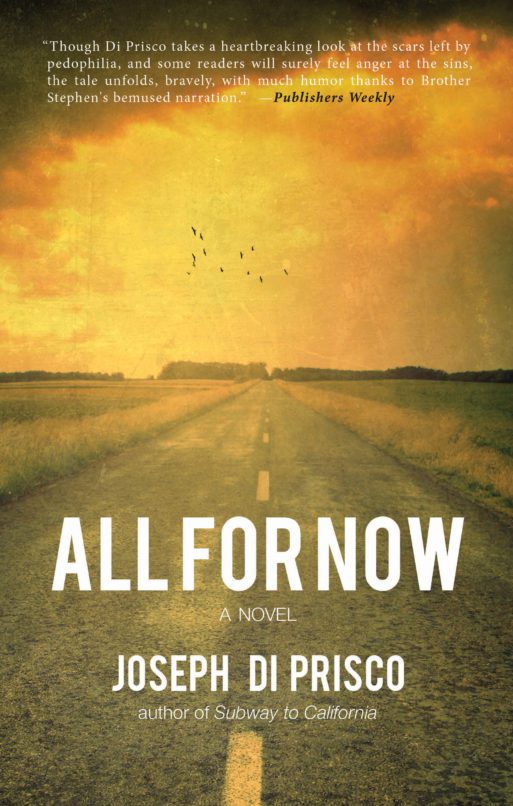 Brother Stephen dies suddenly. That’s when matters get more complicated.
Brother Stephen dies suddenly. That’s when matters get more complicated.
During a meeting of school administrators, Brother Stephen, the main character of Joseph di Prisco’s novel, All for Now, monk at a Catholic Seminary and a teacher in the attached high school, dies “sprawled along a weathered conference table like somebody’s lost raincoat.” The last thing he sees is an orange-winged Monarch butterfly fluttering outside a window, framed by cloudy blue sky. We begin and end the novel with this image, serving as both the entrance into and the terminus of Brother Stephen’s “after-life,” as he thinks of it. Perhaps more accurately, and less mysteriously, it is the clichéd and oft-reported instance of a life “flashing before your eyes,” though never before has a life flashed quite this way. After he sees the Monarch butterfly, he begins to drift away. He remembers that “He had been thinking about death for as long as he had been thinking about anything,” and then, quite inexplicably, he finds himself behind the wheel of a Toyota Prius, driving down a coastal highway that just too closely resembles California’s Highway 1 to be anything other (though there are no road signs to tell him different). Here begins a journey into re-living, in which he will reunite with his high school sweetheart and one true love, save one of his wayward pupils, and confront his life-long nemesis.
While All for Now deals with Catholic institutions, it is not a religious novel. God figures little in the story or in Brother Stephen’s thoughts. Indeed, All for Now might be more accurately described as anti-religious. It deals heavily with sexual abuse and the moral compromise of the Catholic Church, personified through the amoral and manipulative Brother Charlie, a senior member of the local clergy. In one harrowing scene, that thoroughly explains the stunted nature of Stephen’s life, Charlie sexually abuses the young boy, and proceeds to recruit him to a life of monasticism. Stephen re-visits this scene in his after-life. Perhaps he had never before admitted to himself how much he’d been affected. He surely never admitted that this was why he broke off his relationship with Shannon, who in his after life comes to resemble something like his Juliet and his guardian angel combined, a redemptive force, and the symbol of all that his life could have been, all that he missed out on.
Since the book opens with the main character’s death, necessarily, the subject touches on every page, much of the text self-abashedly questioning Stephen’s habitual usage of the future tense, or of a variety of common turns of phrase. Eventually we discover a portrait of a man for whom death offers a second chance to address the life he lived, even offering him the prospect of something like redemption, that most Catholic of concepts — yet this is a very personal sort of redemption. God figures little into the equation. Rather it is Stephen discovering for himself that he always had the power to live to the fullest, had he chosen to do so. He wonders, aloud to Shannon sometimes, if there is a meaning to life. Of course, he never finds a satisfactory answer. But he does find a way to become satisfied with his own, and through this, he achieves a sort of peace. It is sad and poignant and beautiful. If all deaths occurred in the same manner, I think we would all have a little less reason to fear it.

 “All for Now,” by Joseph Di Prisco
“All for Now,” by Joseph Di Prisco


 Our Annual Seven Holiday Gifts for Someone Who Is Grieving, 2024 Edition
Our Annual Seven Holiday Gifts for Someone Who Is Grieving, 2024 Edition

 “Hands Up to the Sky” by Michael Franti & Spearhead
“Hands Up to the Sky” by Michael Franti & Spearhead














